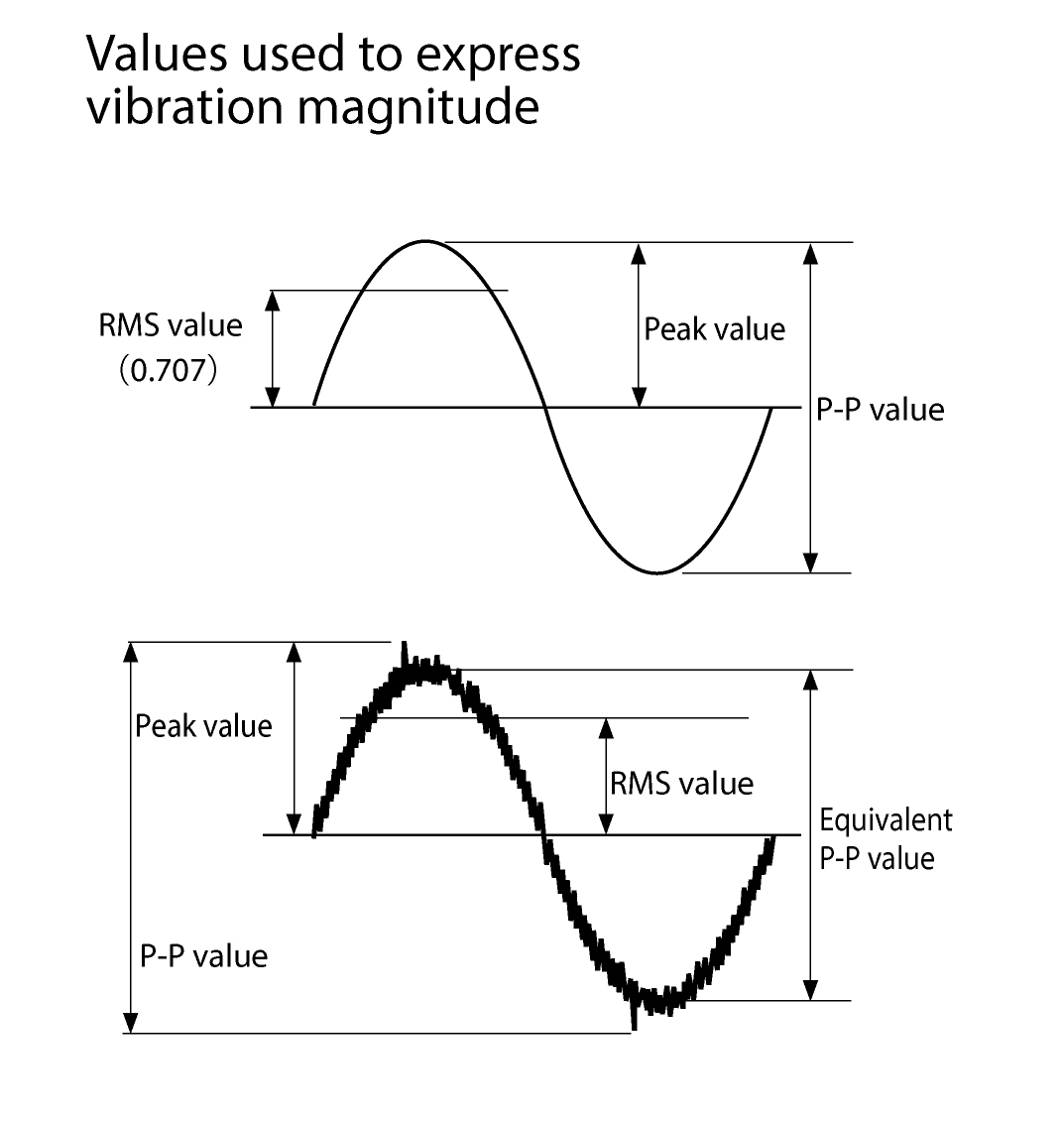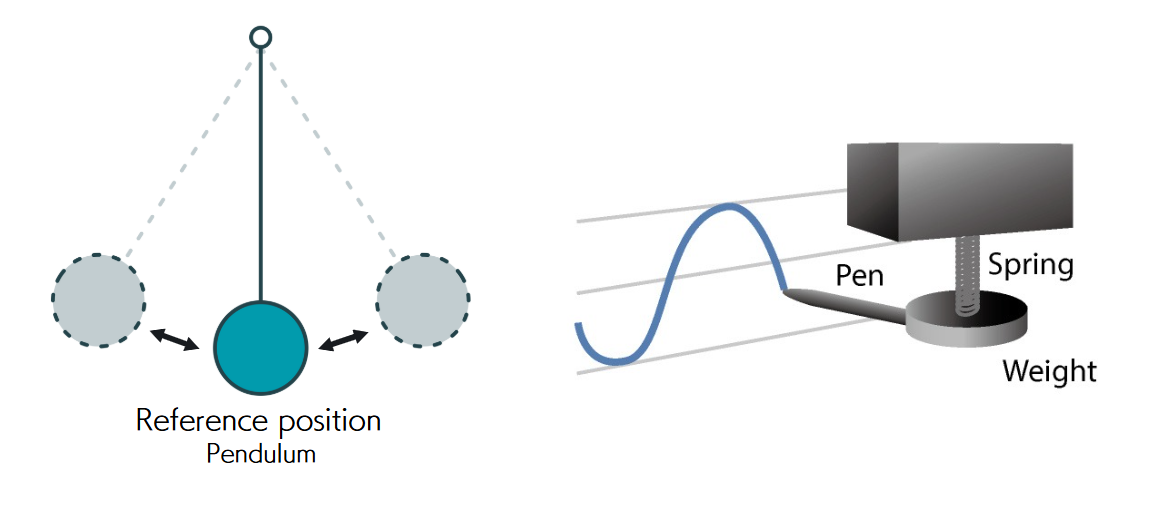VIBRATION AND VIBRATION METERS
VIBRATION
Vibration explained
Mechanical vibrations can be represented as a complex combination of a spring and weight, as shown in the illustration on the right. The basic physical quantities that define vibration are displacement, velocity, and acceleration. By measuring each of these values, the vibration condition can be assessed.
Values used to express vibration magnitude

Vibration can be expressed as a ± waveform, with the horizontal axis representing time and the vertical axis representing the magnitude of vibration, and the center line representing 0 as the reference.
The following values indicate the amplitude of vibration.
■Peak value : Maximum value of single-sided amplitude
■RMS value : Root mean square of instantaneous value
■P-P value(peak-to-peak value) : Maximum difference between highest and lowest value
■Equivalent peak value : RMS value multiplied by √2
■Equivalent P-P value : RMS value multiplied by 2√2
■Crest factor : Peak value/RMS value
Acceleration explained, Velocity explained, Displacement explained

Displacement explained
The movement distance (travel) from a reference point is called displacement. For example, if a car travels a distance of 100 meters, the displacement value is 100 m. When considering vibrations, the movement distance of the vibrating object from the stationary rest position is the displacement, which changes between positive and negative values.

Velocity explained
This quantity expresses the amount of change per unit of time. It is related to the vibration energy. For example, if a car travels a distance of 100 meters in 10 seconds, the velocity is the distance (100 m) divided by the time (10 s), i.e. 10 m/s. When considering vibrations, the displacement magnitude and direction change over a short span of time, and the velocity therefore is not usually constant.
The following relationship exists:

Acceleration explained
Acceleration is the change in velocity per unit of time. It is proportional to the impact force or other external force. For example, if a car traveling at a velocity of 10 m/s changes to a velocity of 30 m/s over a period of 2 seconds, the acceleration is the change in velocity (20 m/s) divided by the time (2 s), i.e. 10 m/s2. When considering vibrations, the velocity and direction change over a short span of time, and the acceleration therefore is not usually constant.
The following relationship exists:
Usage of displacement, velocity, and acceleration
|
Displacement
|
・Measurement of vibrations in a low frequency range (below 200 Hz) ・Cases where displacement as such is critical ・Assessment of wear and damage related to static deformation, such as the effects of tensile force or compression ・Assessment of contact risks and machining precision |
|---|---|
|
Velocity
|
・Measurement of vibrations in a medium frequency range(10 Hz to 1 kHz) ・Detection of imbalance, misalignment, bolt loosening, rattle and play etc. ・Assessment of vibration severity (ISO 10816, JIS B 0906) ・Assessment of metal fatigue |
|
Acceleration
|
・Measurement of vibrations in a high frequency range(above 1 kHz) ・Detection of bearing and gear defects etc. |



